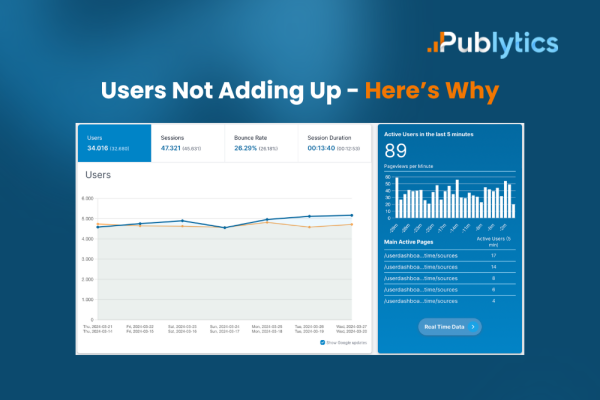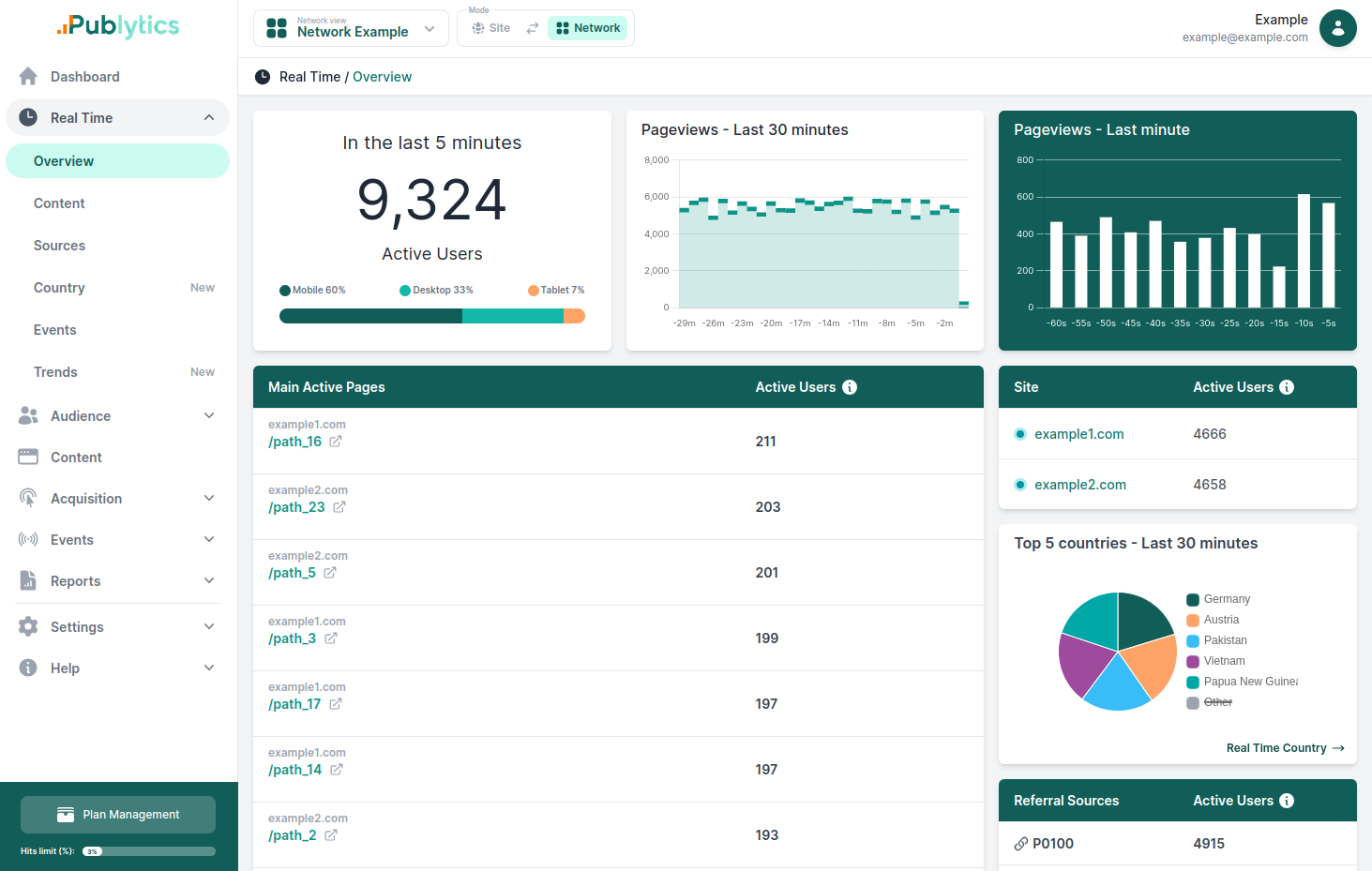Google Analytics 4 Users not adding up - The Complete Guide
Jan 03, 2024 | Author: Info Publytics

Are you wondering why some numbers about users do not sum up in GA4? Discover why!
In this article, we will have a big overview of most of the new metrics in Google Analytics 4, in order to understand why some numbers seem not to add up correctly. Most of the "critical" metrics are those regarding Users, which are segmented into four groups:
1) Total users
2) Active users
3) New users
4) Returning users
What are Total Users in GA4?
Anybody that sees your website, regardless of whether they leave after a few seconds or stay to subscribe to your product, is considered a total user in GA4. Put otherwise, the sum of all users include both engaged and inactive users who say, "Yeah, nevermind."
Navigate to Reports > Engagement to see the overall number of users. Next, select Events. An event in Google Analytics is a particular user interaction with your website or application. They may, for instance, begin a session or browse the page.). Every action that a person does on your site is broken down on the Events page. For instance, you might discover that only a percentage of the users visiting a page are doing an action that you expected them to do (e.g. clicking a CTA, watching a video), and you can reason on how to increment that percentage.
What are Active Users in GA4?
Because Google Analytics is aware that having active users makes advertisers happy all throughout the world, they made it their default statistic. When you see "users" stated, consider it to mean "active users" at all times. Either new users or users with current sessions are considered active users in GA4. A visitor who stays on your website for more than ten seconds, makes many pageviews, or completes at least one conversion is said to be having an engaged session. Before Universal Analytics was shut down on July 1, 2023, there was a specific report for active users. This report isn't available in GA4 because active users always take center stage and don't require their own spotlight.
What are New Users in GA4?
New Users, as the term says, are the ones that visited your website for the first time (depending on how Google identifies them as unique users, through their identification system): this is logged as a ‘first_visit’ or ‘first_open’ event.
What are Returning Users in GA4?
Returing users are the only thing that can compare favorably to new ones on your website or app. Why? Retention costs less than acquisition, but that's not all. Additionally, it's a positive indication that your users are happy—even thrilled—and headed toward loyalty. Returning users in Google Analytics 4 are those who have come to your website or app before. They are returning users if they have visited at least once, even if they did not interact during that visit. To obtain a summary of your repeat visitors, select Reports > Retention. Next, begin by comparing new and returning users within a given time frame.
Why is the users count not equal to the sum of the New and Returning Users?
Total Users is not the sum of New + Returning Users. Total Users as part of a summary row or scorecard is deduplicated in order to provide a count of people (real unique visitors). As an example, imagine that during the month of July, a person from the same device and IP visited a website three times. For the first session (visit) the user was counted as New User, since they hadn't visited before. On their second and third visit, they are counted as Returning Users. At the end of the month, only 1 user visited the website (Total User). In a breakdown report for visitor type, they are counted thrice, (1) New User and (2) Returning Users.
Recent Posts
-
Enhancing Data Privacy in Web Analytics
May 13, 2025 | Author: Bruno Cazzaniga
-
How to Track Logged-in Users Without GA4 and Optimize Your Strategy
Mar 31, 2025 | Author: Bruno Cazzaniga
-
Track Article Author: How to Measure Content Creation Performance
Mar 14, 2025 | Author: Bruno Cazzaniga
-
Why Your Multi-Sites Deserve a Unified Dashboard
Feb 26, 2025 | Author: Bruno Cazzaniga
-
How to track traffic from Bluesky in Google Analytics (GA4) and other analytics tools
Dec 08, 2024 | Author: Info Publytics
Start monitoring your websites in few seconds No credit card required!
Start monitoring your websites in few seconds


